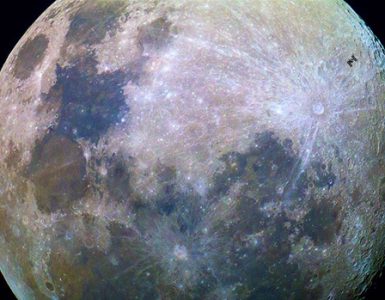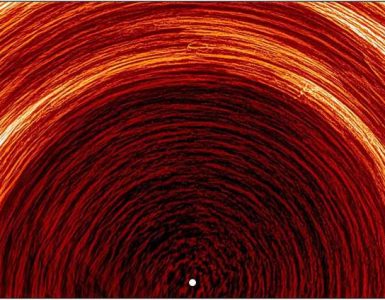by Rhodilee Jean Dolor
Some scientists believe that another planet is lurking in the Solar System. Planet Nine has not yet been found, but researchers of a new study have created a “treasure map” that may eventually help find this elusive world.
Why Scientists Think Planet 9 Exists
Some astronomers think that Planet Nine exists based on the behavior of objects in the Kuiper Belt, a region of icy bodies beyond Neptune.
In a 2016 study, Mike Brown and Konstantin Batygin, from the Division of Geological and Planetary Sciences of the California Institute of Technology in Pasadena, examined six Kuiper Belt Objects (KBOs) and found that they follow elliptical orbits that point in the same direction. The researchers said that the chances of this happening is 1 in 100 since the outermost points of these orbits move around the Solar System at different rates.
“It’s almost like having six hands on a clock all moving at different rates, and when you happen to look up, they’re all in exactly the same place,” Brown said at the time.
Brown and Batygin also observed that the orbits of the six KBOs are tilted in the same way and the probability of this happening is just about 0.007 percent.
“Basically it shouldn’t happen randomly so we thought something else must be shaping these orbits.”
The researchers analyzed these phenomena and concluded that the gravity of a previously undiscovered planet –the theoretical Planet Nine, could be causing the unusual orbits of the KBOs.
“Our proposed perturber may be more reasonably reconciled with a dynamical scattering origin. Specifically, it is possible that our perturber represents a primordial giant planet core that was ejected during the nebular epoch of the Solar System’s evolution,” Brown and Batygin wrote in their study, published in The Astronomical Journal on Jan. 20, 2016.
“Recent simulations have demonstrated that such a scenario may in fact be an expected outcome of the early evolution of planetary systems”
How Scientists Created the ‘Treasure Map’ for Finding the Elusive World
Using mathematical modeling and computer simulations, Brown and Batygin were able to infer the features and characteristics of Planet Nine, but to date, the object has not yet been found.
To facilitate the search for the elusive planet, the researchers published a new study that proposed what could be considered as a treasure map that can guide planet hunters to the likely location of this theoretical world.
To make the map, Brown and Batygin examined observations of all known KBOs with orbits that they believe are influenced by Planet Nine.
The first step was to filter out Neptune’s tugs on these objects. They also used numerical simulations to find out how changes to the parameters of Planet Nine would alter the outer solar system.
“We accomplished this through a huge number of numerical simulations where we placed a bunch of objects in the outer solar system, added the four giant planets, and then added different incarnations of Planet Nine, and watched the outer solar system evolve,” Brown said. “Every parameter of Planet Nine (almost) has huge impacts on the outer solar system. Which is good, since that means we have leverage to learn about Planet Nine from the outer solar system.”
Using the maximum likelihood model that combined simulations, observational bias and observations of the relevant objects along with the MCMC statistics method, the researchers came up with a map that shows where Planet Nine can be likely found.
Characteristics and Location of Planet 9
The study, which has been accepted for publication in the Astronomical Journal, also offered a picture of the distant planet. The researchers said that this world is about 6.2 times as massive as the Earth and gets nearest the sun in its elliptical orbit at a distance of 380 astronomical units (AU), or 380 times the distance between the Earth and sun.
Planet Nine is also believed to be orbiting closer to Earth than previously thought. The closer it is to our planet, the brighter it should be, but on average, the brightness of Planet Nine is magnitude 22, according to the researchers. For perspective, the average magnitude of Pluto is around 15 and it is only visible using at least 10-inch telescopes. Brown and Batygin, however, said that the estimated brightness of Planet Nine is based on its assumed composition.
As for its orbital inclination, or how much it is tilted from the plane of the Solar System, Planet Nine is inclined at around 16 degrees. For comparison, Earth’s orbital inclination is zero degrees.
“Planet Nine has a mass of 6.2/+2.2/-1.3 Earth masses, a semimajor axis of 380/+140/-80 AU, and inclination of 16+/-5 degrees, and perihelion of 300/+85/-60 AU. We can turn all of that into a map of where to look in the sky and of how bright and far away Planet Nine would be at any position in the sky,” Brown said.
Brown said that if the theoretical world does exist, it is more likely a gas giant like Neptune and not a rocky planet like Earth. Planet Nine would be smaller than Neptune though, which is at least 17 times more massive than our home planet as most gas giants observed by astronomers are just about six to 10 times the mass of Earth.
He added that the planet likely formed at about the same distance from the sun as Neptune and Uranus, but the strong gravity of Saturn later tossed it far into the outer reaches of the Solar System.
Still a Theoretical World
Despite Brown and Batygin’s claims, some astronomers remain skeptical of the idea of Planet Nine absent any conclusive proof that it exists. Scientists hope that the availability of more advanced tools such as the Vera Rubin Observatory, which is currently under construction in Chile and is set to be operational by October 2023, may eventually lead to the discovery of this theoretical world or rule out its existence.





